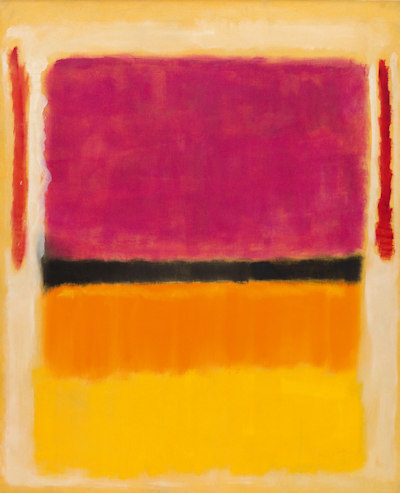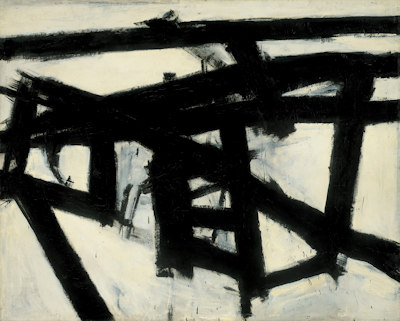


ABSTRACT EXPRESSIONISM
Abstract Expressionism was a term first used in connection with Kandinsky in 1919, but is more commonly associated with post-war American art. Robert Coates, an American critic, coined it in 1946, when referring to the work of Gorky, Pollock and De Kooning. By the 1951 Museum of Modern Art exhibition ‘Abstract Painting and Sculpture in America’, the term was used to refer to all types of non-geometric abstraction.
Two Groups
There are two distinct groups within the Abstract Expressionist movement.
1. Colour Field artists such as Marc Rothko. They often worked with simple, blocks of colour
2. The gestural painters like Jackson Pollock. They based their ideas around the Surrealist technique of automatism or random gestures.
Not all the artists associated with gestural painting produced either purely abstract or purely expressionist work. Some critics preferred the phrase Action Painting. Because of the concentration of artists in New York, they were known as the New York School.
The only real connection between Abstract Expressionists was in their artistic philosophy. Publications like Tiger’s Eye, an avant-garde magazine, helped to spread their ideas across America. All the painters were influenced by Existentialist ideas, which emphasised the importance of the act of creating, not of the finished object.
Pollock once stated, “I continue to get further away from the conventional painters tools, such as easels, palettes, brushes…I prefer sticks, towels, and dripping fluid paint. When I am painting, I am not aware of what I am doing. I have no fears about making change, destroying images, because painting has a life of its own. I try to let it come through.”
Influences
Most of the artists were heavily influenced by the Surrealists. A number were taught by Surrealists who had escaped WWII in Europe and took up teaching posts in American colleges. Surrealist exhibitions, (eg. Miro (1941) were influential in persuading the Abstract Expressionists to express their subconscious feelings and emotions through their art.
The Abstract Expressionists also shared an interest in Jung’s ideas on myth, ritual and memory. They had an almost romantic view of the role of the artist, seeing their painting as a way of life. Some felt themselves as disillusioned commentators on contemporary society after the Depression and the Second World War.
Abstract Expressionism dominated the art community for almost two decades from the 1940’s to the sixties.
While the movement had strong ties in America, it had much less of an impact in Europe. Abstract Expressionism focused on making the painting a reflection of the work done by the artist and nothing else. Other movements, such as Minimalism, concentrated on diminishing the importance of the artist and their craftsmanship to glorify the object itself. In some ways, Abstract Expressionism worked to re-connect art with its roots — the relationship between the artist, his work and its impact on society.
Paul Priestley – Artist in School
Check out my YouTube Channel
for great How to Draw tutorials designed for children
